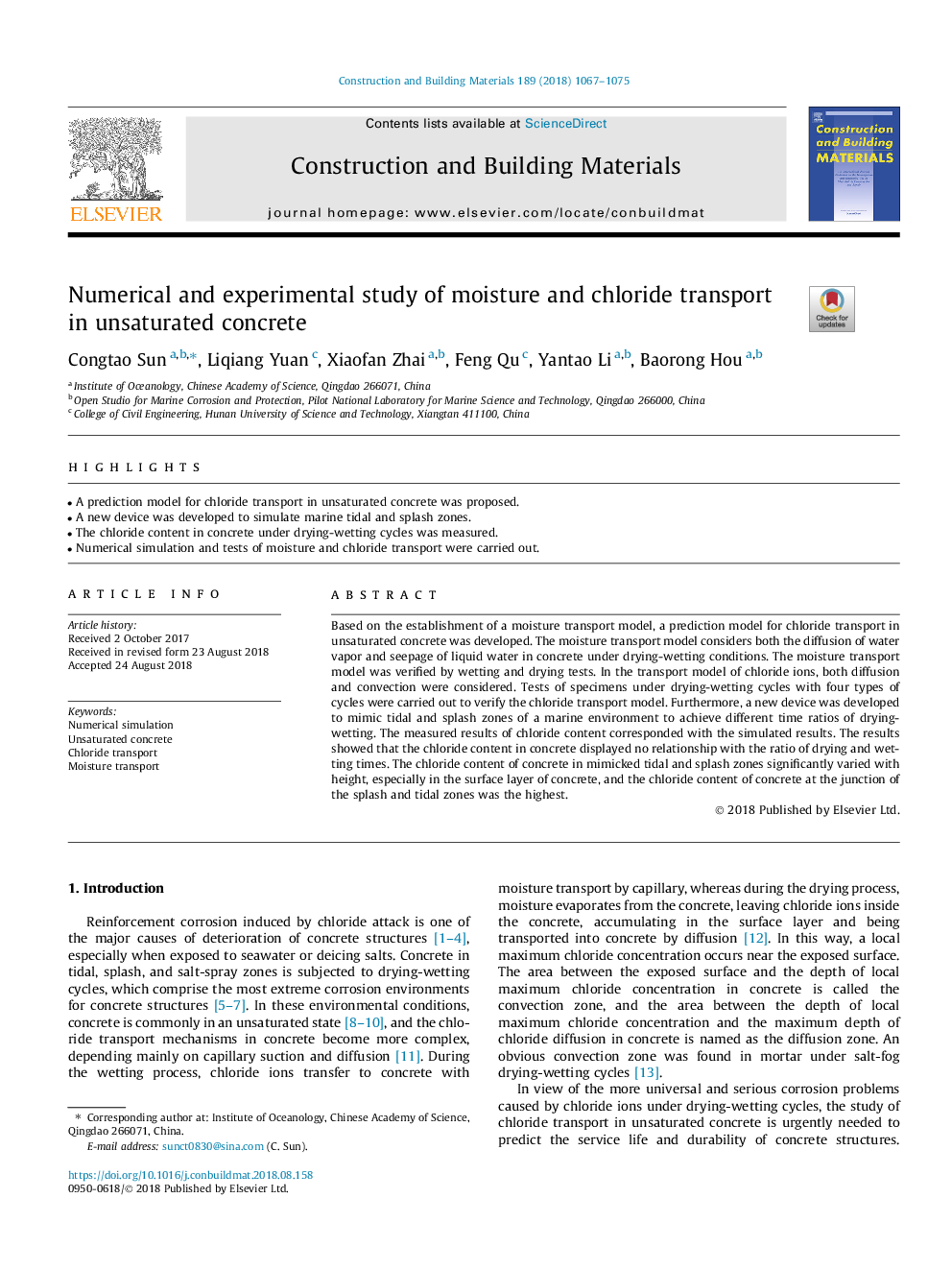| Article ID | Journal | Published Year | Pages | File Type |
|---|---|---|---|---|
| 10145807 | Construction and Building Materials | 2018 | 9 Pages |
Abstract
Based on the establishment of a moisture transport model, a prediction model for chloride transport in unsaturated concrete was developed. The moisture transport model considers both the diffusion of water vapor and seepage of liquid water in concrete under drying-wetting conditions. The moisture transport model was verified by wetting and drying tests. In the transport model of chloride ions, both diffusion and convection were considered. Tests of specimens under drying-wetting cycles with four types of cycles were carried out to verify the chloride transport model. Furthermore, a new device was developed to mimic tidal and splash zones of a marine environment to achieve different time ratios of drying-wetting. The measured results of chloride content corresponded with the simulated results. The results showed that the chloride content in concrete displayed no relationship with the ratio of drying and wetting times. The chloride content of concrete in mimicked tidal and splash zones significantly varied with height, especially in the surface layer of concrete, and the chloride content of concrete at the junction of the splash and tidal zones was the highest.
Related Topics
Physical Sciences and Engineering
Engineering
Civil and Structural Engineering
Authors
Congtao Sun, Liqiang Yuan, Xiaofan Zhai, Feng Qu, Yantao Li, Baorong Hou,
